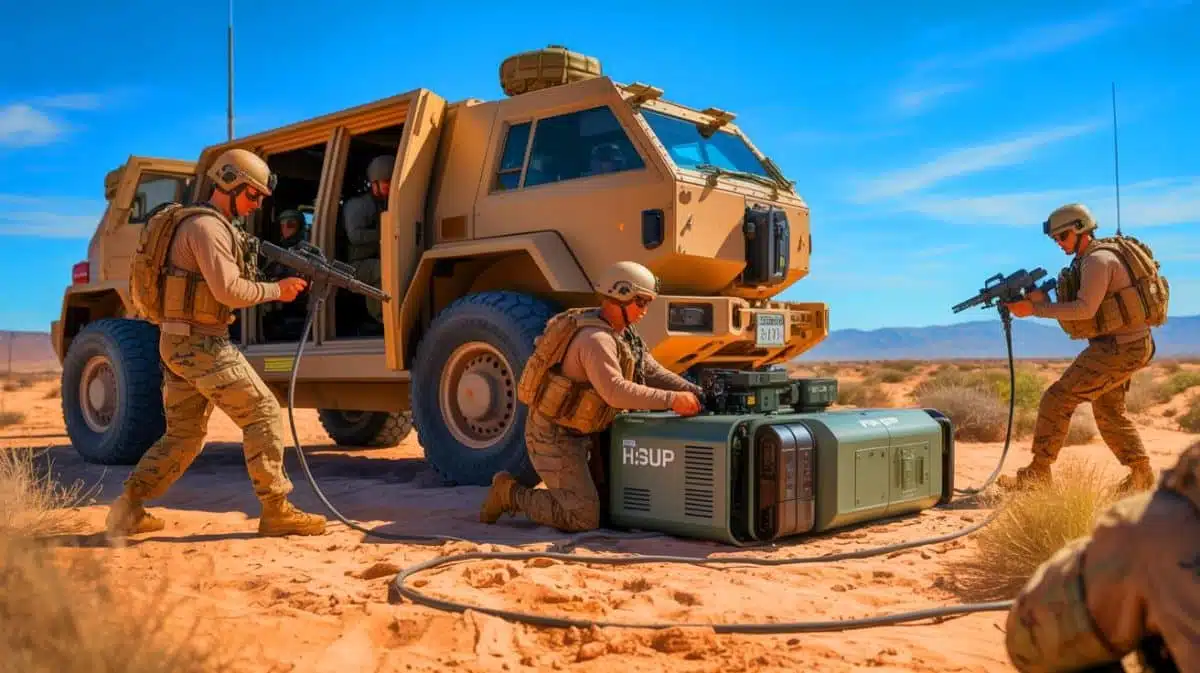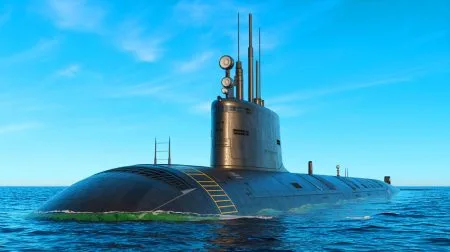| IN A NUTSHELL |
|
The U.S. Naval Research Laboratory has unveiled a groundbreaking prototype known as the Hydrogen Small Unit Power (H-SUP), a hydrogen-based device that promises to revolutionize military operations. This innovative technology offers a low-signature solution for electric power production, delivering more energy per weight than traditional batteries. As the military seeks to enhance its operational capabilities, the H-SUP stands out for its potential to increase force lethality while reducing logistical burdens. By training Marines at the Marine Corps Air Station Yuma, the U.S. Navy is actively preparing to integrate this technology into real-world scenarios, marking a significant step forward in military innovation.
Hydrogen Power Tech Delivers Increased Operational Range
The H-SUP’s hydrogen power technology is more than just an energy solution; it represents a transformative capability for military operations. The device offers an increased operational range, reduced thermal and audible signatures, and lower maintenance needs, making it a strategic asset on the battlefield. According to Kevin Cronin, the Principal Investigator at the NRL, the H-SUP is designed to support distributed operations and extend mission range, offering strategic value beyond mere power provision.
This technology has been tested extensively, with field trials conducted at Marine Corps Base Camp Lejeune and Marine Corps Air Station Yuma. These trials aim to reduce risk and accelerate the technology’s development, ensuring it meets the rigorous demands of military operations. Capt. Joshua Ashley of the U.S. Marine Corps emphasizes the importance of warfighter feedback in refining the system. This collaboration between the lab and the end-users ensures that the H-SUP is tailored to meet the practical needs of Marines, enhancing their autonomy and operational efficiency.
Developed for Use in Unmanned Vehicles
The origins of the H-SUP’s fuel cell system can be traced to its development for unmanned vehicles, where high specific energy content is crucial for extended range and endurance. The Naval Air Warfare Center Aircraft Division’s H2 Stalker program successfully integrated this fuel cell into the Stalker VXE30, showcasing the system’s potential in enhancing unmanned aerial vehicle (UAV) capabilities. This integration not only extends mission duration but also aligns with the U.S. Marine Corps’ concept of Expeditionary Advanced Base Operations.
The H2 Stalker has demonstrated its efficacy through multiple flight tests, highlighting its ability to deliver greater power and energy-to-weight ratios than alternative configurations. This success underscores the potential of hydrogen fuel cells in advancing military technology. Cronin highlights the importance of partnerships with industry and acquisition commands in pushing this technology into operational use, ensuring that it serves Marines effectively in the field.
Strategic Importance and Future Prospects
The strategic importance of the H-SUP extends beyond its immediate applications, as it represents a broader shift towards sustainable and efficient energy solutions in the military. By reducing logistical sustainment requirements, the H-SUP enables more agile and independent operations, a critical advantage in modern warfare. The NRL’s commitment to turning advanced science into operational capability is evident in its collaborative approach, working closely with Marines to refine and enhance the technology.
This commitment to innovation is not just about immediate gains but also about shaping the future of military operations. The H-SUP’s potential applications are vast, from powering unmanned systems to enhancing the autonomy of small units. As the U.S. military continues to modernize, technologies like the H-SUP will play a crucial role in defining the capabilities of future forces. The ongoing collaboration between researchers and end-users will be vital in ensuring that these technologies are not just theoretical advancements but practical tools that enhance operational effectiveness.
Integrating Hydrogen Power into Military Strategy
The integration of hydrogen power into military strategy signifies a fundamental shift towards more sustainable and efficient energy solutions. By leveraging hydrogen’s high energy density, the military can achieve longer mission durations and reduced dependency on traditional logistics. This shift aligns with broader efforts to modernize military operations and reduce the environmental impact of energy consumption.
The success of the H-SUP and similar technologies will depend on continued investment in research and development, as well as the willingness of military leaders to embrace innovative solutions. As the U.S. Navy and Marine Corps continue to explore the potential of hydrogen power, the lessons learned will inform future strategies and operational doctrines. The question remains: how will these advancements reshape the landscape of military technology and strategy in the years to come?
Did you like it? 4.3/5 (30)







Wow, could this mean no more charging cables? 🤔
Sounds too good to be true! Is it really as effective as they claim?
Merci à la Marine US pour cette avancée technologique.
How soon can we expect this to be available for civilian use?
This could be a game-changer for renewable energy!